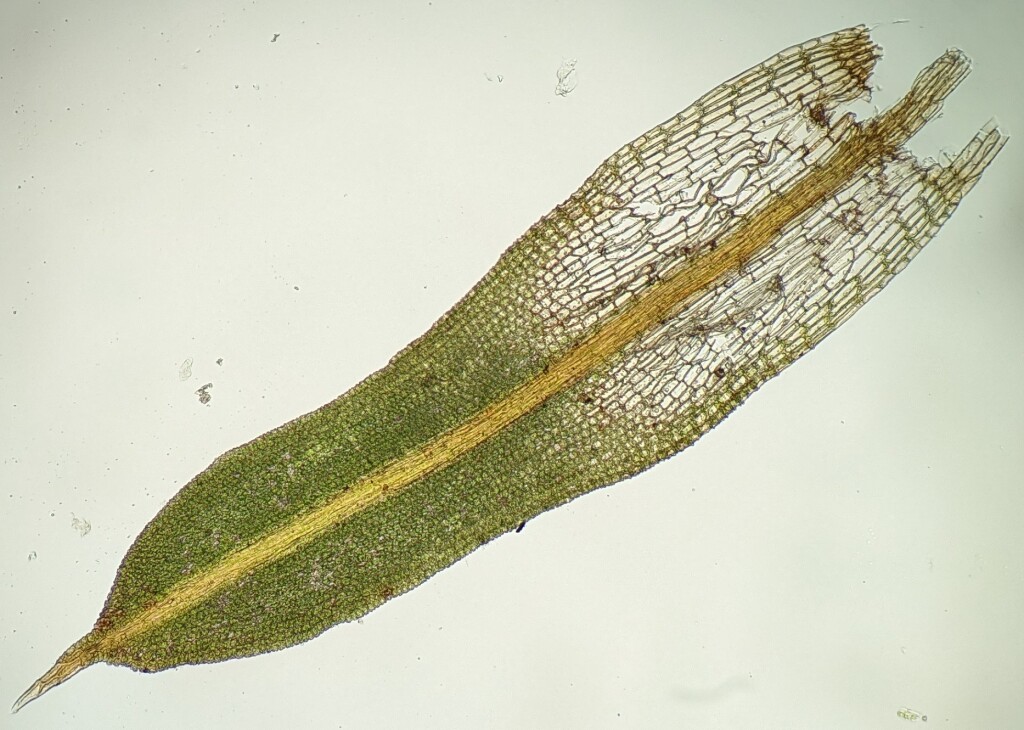Syntrichia anderssonii
(Ångstr.) R.H.ZanderDioicous, rarely synoicous. Loose tufts on rock or soil. Plants reddish-brown to greenish-brown. Stems simple or dichotomously branched, to 30 mm long. Leaves spreading when moist, twisted and incurved at the apex when dry, broadly ovate-lanceolate to oblong-lanceolate or ligulate, sometimes contracted near mid-leaf, to 4 mm long, concave to carinate; apex acute; costa short-excurrent as a hair-point; hair-point short and red, hyaline-tipped, smooth or slightly denticulate, sometimes long, hyaline and red only at base; margins occasionally denticulate near apex, revolute in basal 1/2–3/4, with up to 8 rows of short thicker-walled and less papillose cells not forming a conspicuous border; laminal cells in apical half shortly ovoid or subquadrate to irregularly hexagonal, 8–10 μm long, c. 8.5–11.5 (–14.5) μm wide, papillose; basal laminal cells narrowly oblong to linear, 70–120 μm long, hyaline. Seta to 15 mm long, reddish, twisted to the right near capsule. Capsule erect, cylindric, straight, 2.5–5.5 mm long. Peristome red, spirally twisted. Operculum conic.
VVP, CVU, HNF, VAlp. Mostly among alpine and subalpine vegetation from Mount Buller east. Also NSW, ACT and Tas. New Zealand, Subantarctic Islands and southern South America.
 Spinning
Spinning